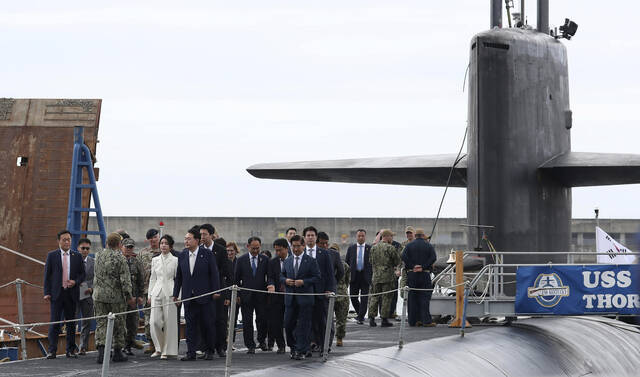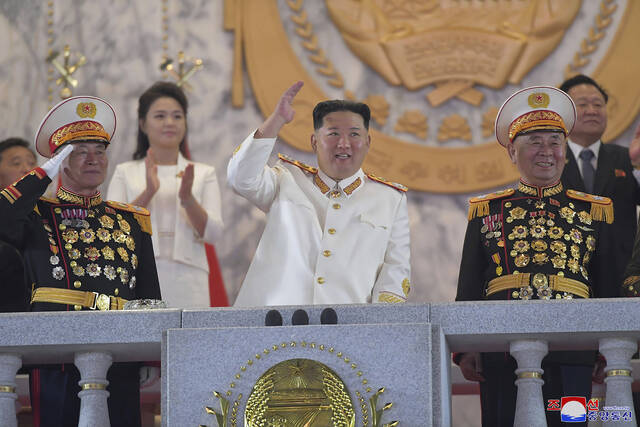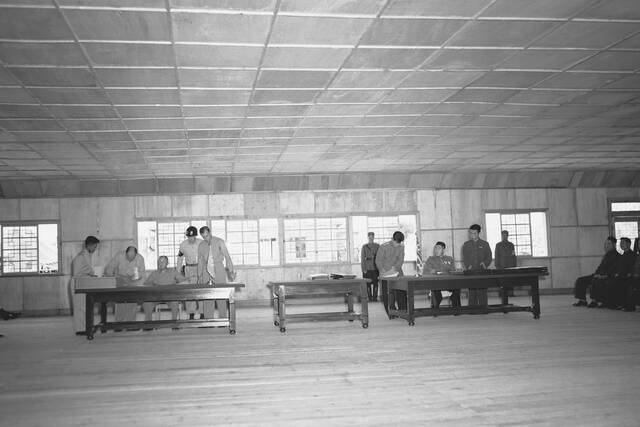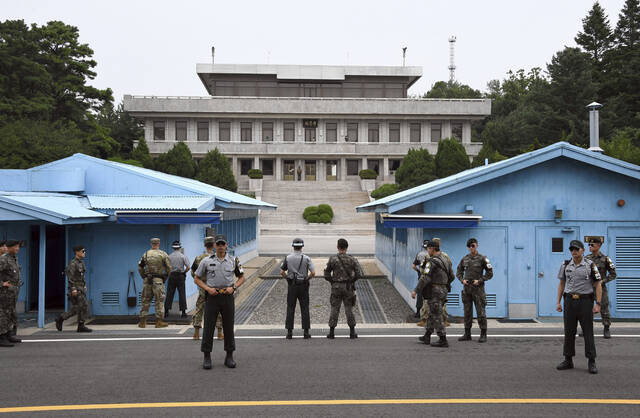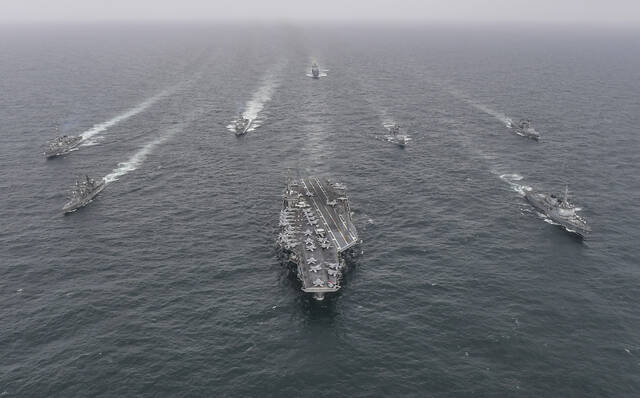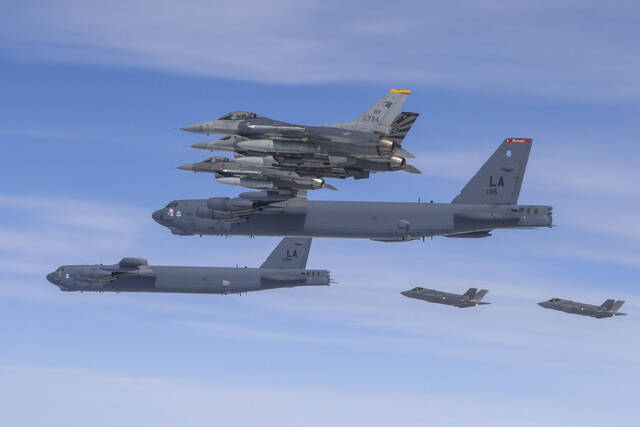Rival Koreas mark armistice anniversary in 2 ways that highlight rising tensions
SEOUL, South Korea — The truce that stopped the bloodshed in the Korean War turns 70 years old on Thursday and the two Koreas are marking the anniversary in starkly different ways, underscoring their deepening nuclear tensions.
North Korea has invited delegations from China and Russia as it prepares to stage huge celebrations with thousands of citizens who have rehearsed for months to commemorate the armistice it sees as a victory in the “Grand Fatherland Liberation War.” The festivities are likely to be capped by a giant military parade in the capital, Pyongyang, where leader Kim Jong Un could showcase his most powerful, nuclear-capable missiles designed to target neighboring rivals and the U.S. mainland.
The mood is more somber in South Korea, where President Yoon Suk Yeol has invited dozens of foreign war veterans to honor the fallen soldiers of the 1950-53 conflict, which killed and injured millions and set the stage for decades of animosity among the Koreas and the United States.
Yoon, a conservative condemned by Pyongyang as a “traitor,” will likely use this week’s events to highlight the North’s growing threat and double down on his goals of strengthening the South’s defense and its alliance with the U.S.
Tensions between the rivals are at their highest point in years, as the pace of North Korean missile tests and U.S.-South Korean joint military exercises has intensified in a tit-for-tat cycle. The dueling military activities have been punctuated by verbal threats, including North Korean talk of preemptive nuclear strikes and U.S. vows to “end” Kim’s regime in the event of such an attack.
The frictions provide a renewed reminder that the armistice has left the Korean Peninsula in a technical state of war. Through their 70 years of diplomatic ups and downs, the Koreas have consistently seen each other as existential threats, which is essentially why the armistice was never replaced by a peace treaty as originally intended.
Managing tensions is now more complicated than ever as Kim continues to reject dialogue with the U.S. while aggressively expanding a nuclear arsenal he sees as his strongest guarantee of survival.
Kim is also pushing for deeper cooperation with authoritarian allies China and Russia, which are locked in their own confrontations with Washington over regional influence and the war in Ukraine, as he aims to counter U.S. efforts to tighten trilateral security cooperation with Seoul and Tokyo.
North Korean state media on Wednesday highlighted the arrival of a Russian delegation led by Defense Minister Sergei Shoigu, who was greeted at Pyongyang’s airport by senior North Korean officials including Defense Minister Kang Sun Nam. China’s ruling Communist Party is also sending a mid-level official, Li Hongzhong, in hopes of further facilitating bilateral exchanges.
For Kim, bringing Shoigu and Li to his balcony at Pyongyang’s main square to watch a massive parade featuring goose-stepping soldiers, tanks and missiles would be the biggest accomplishment he could show to his domestic audience for the anniversary, said Park Won Gon, a professor at Seoul’s Ewha University.
Kim already displayed his most powerful missiles during a previous parade in February and there might not be meaningful new hardware to show after the North failed in its first attempt to launch a military spy satellite into orbit in May. Economic achievements have been scarce after pandemic-related border closures decimated an economy already crippled by decades of mismanagement and U.S.-led sanctions over Kim’s nuclear ambitions.
Park said the invitations of the Chinese and Russian delegations could also reflect Kim’s unease about the strengthening security cooperation between the U.S. and South Korea, which have included larger joint military exercises, increased deployments of strategic U.S. military assets and new rounds of nuclear contingency planning meetings.
Thursday’s anniversary comes after North Korea conducted three separate rounds of ballistic and cruise missile firings since last week, apparently to protest the U.S. sending major naval assets to the South in a show of force. They include the USS Kentucky, which last week became the first U.S. nuclear-armed submarine to dock in South Korea since the 1980s.
“The strengthening of nuclear deterrence strategies between South Korea, the United States and Japan and military moves like the docking of the ballistic-missile submarine (in South Korea) are a huge burden and threat for North Korea,” Park said. “Since North Korea has limited ability to deal with these moves on its own, emphasizing cooperation with Moscow and Beijing for a combined response would be important (for Kim).”
Moscow and Beijing have already thwarted U.S.-led efforts since last year to strengthen U.N. Security Council sanctions on Pyongyang over its intensified missile testing activity, underscoring a divide between the council’s permanent members deepened over Russia’s war on Ukraine.
When asked about the visits, U.S. State Department deputy spokesperson Vedant Patel urged Beijing and Moscow to play a more constructive role in defusing tensions and to bring Pyongyang back to dialogue.
The Korean War was triggered by a North Korean sneak attack on the South. The North was backed by forces from the newly created People’s Republic of China, which was aided by the then-Soviet air force. South Korea, the U.S. and troops from various countries under the direction of the United Nations fought to push back the invasion.
For South Koreans, the major outcome of the 1953 armistice was the subsequent signing of the U.S.-South Korea Mutual Defense Treaty, which was mainly aimed at calming South Korean security jitters about the truce and continues to serve as the foundation for the countries’ military alliance. Facing growing nuclear threats, Yoon is now seeking stronger U.S. assurances that it would swiftly and decisively use its nuclear weapons to defend the South in the event of a North Korean nuclear attack.
Thousands of people are expected to attend an armistice ceremony Thursday in South Korea’s southern port city of Busan, which is the location of a cemetery honoring the U.N. soldiers killed during the war.
While there have been several skirmishes between the Koreas along their border in past years, the armistice has prevented a return to large-scale hostilities. A recent border incident involving an American soldier who bolted into the North through the truce village of Panmunjom — named after a town where the armistice was signed — has highlighted how the agreement could serve as a safety valve when relations are strained.
The U.S.-led U.N. Command, which was created to fight the war and then remained in the South to supervise the armistice’s implementation, says it is using the armistice’s communications mechanisms to negotiate the release of Pvt. Travis King. It’s likely referring to the so-called pink phone, a telephone line between the command and the North Korean People’s Army at Panmunjom.
“Despite innumerable provocations, challenges, misunderstandings and even deaths that resulted since the signing of the armistice agreement, it has in general withstood the test of 70 years,” Andrew Harrison, a British lieutenant general who is the deputy commander at the U.N. Command, said during a news conference Monday.
Remove the ads from your TribLIVE reading experience but still support the journalists who create the content with TribLIVE Ad-Free.

